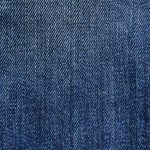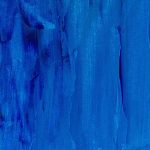Velvet comes in several types, each with unique textures and uses that can elevate your style and décor. Crushed velvet offers a dynamic, shiny surface perfect for bold fashion. Silk velvet feels incredibly soft with a subtle sheen, great for elegant wear. Velour combines plush softness with stretch, ideal for comfy loungewear. Cotton velvet is breathable and versatile, while embossed velvet adds intricate patterns for statement pieces. Explore further to uncover which velvet suits your next project best.
Table of Contents
Key Takeaways
- Crushed velvet has an irregular texture that reflects light dynamically, ideal for bold fashion and elegant home décor.
- Silk velvet offers unmatched softness and a natural sheen, perfect for evening wear and delicate accessories.
- Velour features a plush, stretchy knit surface that combines softness with durability, suitable for loungewear and upholstery.
- Cotton velvet is breathable and versatile, best cared for with gentle washing to maintain texture and comfort.
- Embossed velvet showcases intricate raised patterns, adding luxury and distinct design to statement clothing and décor pieces.
Crushed Velvet: Texture and Applications
Crushed velvet stands out with its distinctive texture, created by pressing the fabric while wet to produce a rippled, shiny surface.
When you run your fingers over crushed velvet, you’ll notice the irregular pattern that catches light differently, giving it a dynamic, luxurious look. This texture makes it ideal for fashion pieces like dresses, jackets, and accessories that need a bold statement.
You’ll also find crushed velvet in home décor, such as throw pillows and drapes, where it adds a touch of elegance and depth to any room.
Because of its unique finish, crushed velvet often requires gentle care to maintain its softness and sheen. Using it, you’ll elevate your style with a fabric that’s as tactile as it’s visually striking.
Silk Velvet: Characteristics and Uses
Although silk velvet demands careful handling, you’ll appreciate its unmatched softness and natural sheen. This luxurious fabric is prized for its fine texture and elegant drape, making it ideal for special occasions.
Silk velvet offers unmatched softness and elegant drape, perfect for adding luxury to special occasions.
When you choose silk velvet, consider these key points:
- Appearance: It boasts a rich luster that changes subtly with light, adding depth to your garments or décor.
- Feel: The fabric feels incredibly smooth and lightweight against your skin.
- Care: You’ll need to hand wash or dry clean it, as machine washing can damage the fibers.
- Uses: Silk velvet suits evening wear, high-end upholstery, and delicate accessories that require a touch of sophistication.
Velour: Softness and Durability
Velour offers a plush texture that combines softness with impressive durability, making it a favorite for both clothing and home furnishings.
When you choose velour, you get a fabric that feels luxuriously smooth against your skin while standing up well to daily wear. Its knit construction provides flexibility, so you’ll enjoy comfortable stretch without sacrificing strength.
Velour’s dense pile surface resists crushing, maintaining its rich appearance even after repeated use and washing. Whether you’re picking it for cozy loungewear or stylish upholstery, velour adapts well, balancing comfort with resilience.
Just remember, to keep that softness intact, handle it gently during cleaning—you’ll want to avoid harsh detergents or high heat that could damage the fibers.
Velour’s blend of plushness and toughness makes it a practical yet elegant choice.
Cotton Velvet: Versatility and Care
While velour impresses with its stretch and durability, cotton velvet offers a different kind of appeal that blends versatility with easy care.
You’ll find cotton velvet perfect for both apparel and home decor, thanks to its breathable, natural fiber base.
When caring for cotton velvet, keep these tips in mind:
- Always check the label for specific washing instructions.
- Prefer hand washing or gentle machine cycles with cold water.
- Avoid wringing; gently press out excess water instead.
- Air dry flat to maintain the fabric’s texture and prevent shrinkage.
With these simple steps, you can enjoy cotton velvet’s plush feel and rich appearance without hassle, making it an excellent choice for everyday luxury.
Embossed Velvet: Patterns and Styling
Embossed velvet showcases intricate patterns pressed directly into the fabric, giving you a tactile and visual dimension that plain velvet lacks.
When you choose embossed velvet, you’re picking a fabric that combines luxury with distinct design—florals, geometrics, and damasks often appear, adding depth and sophistication.
Embossed velvet merges luxury with unique patterns like florals and geometrics for timeless elegance.
This texture makes it perfect for statement pieces like jackets, cushions, or drapery, where you want the pattern to stand out without extra embellishment.
You’ll find embossed velvet in both matte and shiny finishes, letting you tailor the look to your style.
Keep in mind, the raised patterns may require gentle care to maintain their shape, but the effort pays off with an elegant, textured fabric that brings any project to life.
Frequently Asked Questions
How Is Velvet Fabric Traditionally Made?
Did you know traditional velvet weaving dates back over 2,000 years? You’ll find it’s made by weaving two layers of fabric simultaneously, then cutting them apart to create that soft, plush pile you love touching.
What Is the History of Velvet in Fashion?
Velvet’s rich history dates back to ancient times, often symbolizing luxury and royalty. You’ll find it embraced in Renaissance and Victorian fashion, showcasing elegance and status. Today, it’s a timeless fabric you can rock stylishly.
How Do You Remove Stains From Velvet Safely?
You want to remove stains gently, yet effectively; don’t rush. Blot spills immediately with a clean cloth, then spot-clean with mild detergent diluted in water. Avoid scrubbing—velvet’s delicate texture needs your careful touch.
Can Velvet Be Recycled or Upcycled?
You can definitely recycle or upcycle velvet! Instead of tossing it, try turning old velvet into cushion covers, bags, or patches. Just make sure to clean it properly before reusing to keep it looking fresh and soft.
What Are the Environmental Impacts of Velvet Production?
When it comes to velvet production, you’ll find it’s not all sunshine and rainbows—water use, chemical dyes, and energy consumption take a toll. But by choosing eco-friendly options, you can help ease the environmental impact.







